Introduction
Archaeological investigations conducted in recent decades have provided valuable new insight into the production of ceramic building material, pottery and amphorae in the Roman province of Dalmatia1. Most of the recent research was conducted in the coastal area of Roman Dalmatia (mostly at its NW part, in the region of ancient Liburnia; map 1). In the most recent period (2014–2018) the research witnessed the first joint, systematic and interdisciplinary research project dedicated to the ceramic production in the province2. One of the most significant outcomes of the project is the first synthesis on the ceramic production in Dalmatia3, which has already become the reference work for the topic.

(Data adapted from RED project GIS; basemap: EU DEM).
In this paper we shall concentrate on some select issues, such as a typology of workshops discovered so far, their statuses and markets, as well as stamps found in such sites (tables 1–3), their owners and their backgrounds, as well as their estates. We will also integrate the probable local stamps’ lists and kilns’ findspots in the interior of the province (tables 1-3; map 1).
Typology of workshops
Until recently, local production was mostly inferred on the basis of stamps confined to a narrow local area. However, after the Crikvenica pottery workshop discovery in 2004 (fig. 1), several other pottery production sites were detected and/or researched in the NW coastal area of the province (map 1), coinciding almost exclusively with the territory of ancient Liburnia. It seems, so far, that the kilns present at these sites were all of the same type (Cuomo di Caprio II/b)4, unlike the interior where the kilns belonged to either Cuomo di Caprio II/a, II/b or II/c type (map 1)5.
According to some authors, some of the workshops could have been, as it seems, directly associated with settlements: stamps BISTVES6 and DOCL7 are considered to be produced in workshops connected with the municipal administration (presumably regarding the municipal land property?), similar as products of some workshops with no registered stamps8. The DALMATIA workshop was perhaps connected with the government9, while there were several workshops organized in military camps (table 3), as in Smrdelji within the territory of the legionary camp in Burnum (see infra). Others were most probably connected with the private estates.
With that in mind, the authors propose two models of the production organisation in Liburnia10:
1) production that was organised within the estate, with the estate’s own resources (e.g. in Crikvenica: DE SALT // SEX MTLLI MAX; fig. 2);
2) production that was organised separately from other estate business, in an officina (perhaps run by someone other than the estate owner but possibly still relying on the estate’s resources?) (e.g. in the Plemići Bay: see infra)11.
Such data, along with the layout and organisation of the production features in Crikvenica workshop and the quantity of wasters (fig. 4) found at the Plemići Bay, indicate that these were large, proto-industrial production centres, with complex production organisation, and a wide and diversified output. The two here illustrated examples are also paradigmatic as they are so far the only ones in Dalmatia with stamps bearing clear indication of estate provenience, stating its type as well. In addition, the stamps attributed to the Plemići Bay estate production12 may be the only ones within the local provincial pottery production to indicate a locatio-conductio relationship between the estate owner(s) and officinatores. It seems that the production in the Plemići Bay was performed at a place named after either an anthroponym or toponym – Zedes13, which perhaps may be linked with the (original) owner of the estate14, where during a longer period of time several different officinatores run the production (L. Tettius De(-–-), T. Gallius(?) Fitus(?) and perhaps also Muttienus, for which cf. here, n. 14). In addition, there is another stamp that perhaps can also be connected with the southern Liburnia (MODESTI. A; table 2, n. 32), due to its limited distribution, as well as to some morphological and epigraphical features, although such attribution remains doubtful as similar stamps (MODESTI and L. MO[-–-]) were found in northern Italy and interpreted as originating from their local figlinae15.
Very confined distribution of locally produced ceramic goods indicates that they were mostly intended to either satisfy the needs of the estate and/or for local markets16, and not for a trade with more distant areas. Nevertheless, recent finds of Crikvenica produced amphorae at Aquileia (Canale Anfora site)17 do indicate that, perhaps sporadic and indirect, commerce outside of the Liburnian region should not be a priori excluded.
Stamps (tables 1-3)
Tables 1-3 show stamps from local workshops and/or production centres in Dalmatia18. Unfortunately, only rarely stamps and kilns have been discovered at the same site, so workshops/production centres have not yet been identified with certainty for most of the stamped goods. It has been taken as the established fact that the tiles production in Dalmatia began with the military fabrication in the mid-1st century AD and that the civilian manufacture started a bit later, towards the end of the 1st century19. However, recent research has shown that tile production in civilian milieu started much earlier than in the military, already in the last decades of the 1st century BC (see infra and table 2, n. 1–3).
Due to the rather well established history of individual military units’ movements20, military stamps (table 3) are much easier to identify and date than the civilian, which probably contributed to the above stated opinion on the chronological primacy of military production. The first military production centre in Dalmatia that scholars were able to identify was Burnum, where – at the site Smrdelji, south of the legionary camp – three kilns and tiles stamped LEG XI C P F were discovered21. In addition to this military unit, stamps of seven other units were identified up to now (LEG IIII FF, LEG VII CPF, LEG VIII AVG, LEG XIIII GEM, COH I BELG, COH III ALP and COH VIII VOL) testifying that the military units produced building material – mostly, but not exclusively, for their own needs – at least from the mid-1st century AD22. Two legions that made permanent Dalmatian garrison were Leg. VII (C P F) and Leg. XI (C P F). It is commonly accepted that they arrived in Illyricum prior to the Pannonian-Dalmatian Uprising (6-9 AD), and that their respective permanent legionary camps in Tilurium and Burnum were built either during the uprising or immediately after it23. However, although numerous epigraphic monuments confirm the presence of their soldiers during the first half of the 1st century AD, there are no stamps – either in their respective camps or elsewhere – prior to 42 AD when both legions received the honorary title Claudia Pia Fidelis (C P F)24.
Most of the military tiles were produced in Burnum, which is not surprising since legions and some auxiliary units stayed there throughout the entire 1st century AD, unlike Tilurium which in mid-1st century transformed into the auxiliary camp after the withdrawal of the Seventh legion. When the last legion left Burnum at the end of the 1st century or at the beginning of the 2nd, production continued – in smaller scale – by auxiliary units (Coh. VIII vol. c. R., Coh. III Alp. and Coh. I Belg.) that formed the garrison of Dalmatia throughout the 2nd and 3rd centuries BC25.
Military workshops occasionally supplied some civilian settlements (such as Aequum, Asseria, and some others). It is still difficult to interpret in which circumstances military workshops distributed their products to civilian customers, but most probably they were either performing some building activities there or solely supplied with their products customers of these settlements26.
However, same as in the other parts of the Roman world, the majority of other tile stamps that are connected to the local production record persons. Most of these persons cannot be identified with people attested in any historical sources, either literary or epigraphic. Rare exceptions are stamps from Caska on the Island of Pag27. One stamp (CAESAR III COS; fig. 5) mentions Octavian, future Emperor Augustus, when he held the consulate for the third time, together with Marc Antony in 31 BC28. Another two stamps from Caska read SEX. APPVLEIO COS (used both on tiles and amphorae) and M. IVNIO SILANO (amphora; fig. 6)29. Sextus Appuleius from the former stamp can most probably be identified with Sex. Appuleius Sex. f. Sex. n., consul of 29 BC and governor of Illyricum in 8 BC. His colleague in the consulate was Octavian, to whom he was closely related because his mother was Octavian’s half-sister30. Marcus Iunius Silanus from the latter stamp was most probably another Augustus’ colleague in the consulate (cos. 25 BC), although another homonymous consul (cos. AD 19) might also be considered31. In April of 2019, during the test excavations in Caska32, another fragment of a tile, this time with a stamp LIBON[-–-], was found (fig. 7). The stamp is of similar features as the previous three and also – at least according to the preliminary research – has not been attested anywhere else. The stamp has not yet been published due to its recent discovery, so it is still too soon to propose any definite conclusions as to whose name was written in it; perhaps we may think of some men from the gens Scribonia, perhaps of L. Scribonius Libo, L. f., consul of 34 BC (together with Marc Antony), who was Octavian’s brother-in-law and who was stationed in Illyricum in 49 BC33. These are the only consular stamps in Dalmatia, and although they partly correspond with the production period of the so-called tegulae Veleiates (which were in use at a very confined territory of ager Veleias during most of the 1st century BC [76–9 BC]), they differ both in stamp features and palaeography: while stamps of tegulae Veleiates are square with text divided in several lines (up to four)34, stamps on tiles from Caska – as far as we can observe at the present state of research – are placed within a rectangular cartouche in a single line. Paleographically, stamps from Caska are more delicate than the majority of tegulae Veleiates35. Lastly, texts of the latter commonly bring officinator’s name(s) and names of the consular couple, while tile stamps from Caska bring – judging by the entirely preserved stamps – solely the name(s) of a single consul, with no mention of officinator. It seems very plausible that all the stamped tiles from Caska, which are almost exclusively confined to this site, can be linked with intensive building activities in the Caska Bay where the senatorial Calpurnii Pisones had their estate36. Consequently, it seems reasonable to assume that the workshop that produced the above described goods was owned by them. However, text from Senatus consultum de Cnaeo Pisone patre – Senate’s decision in the trial of senior Cn. Calpurnius Piso (cos. 7 BC) and his associates, which was recently discoveredin distant Baetica – points out towards another possibility: that initially it was the estate owned by Octavian, which he gave away – with some other estates he possessed in Illyricum – to this very Cn. Calpurnius Piso37, who was the paternal uncle of Calpurnia who set up three votive altars in Caska38. One of the punishments decreed by the Senate was that the estates in Illyricum which were presented to Cn. Piso by Octavian should be returned to Octavian’s heir, Emperor Tiberius. Thus, if the property in Caska was indeed one of these estates, that would mean that after 20 AD, when the Senatus consultum was issued, the estate became an Imperial possession39.
Attempts were made to identify SEX. MTILLIVS (sic!) MAX(IMVS) from Crikvenica stamps. Since the first publication the nomen gentilicium was restored in M(e)tillius, an otherwise unattested variant of the name Metilius. Scarce evidence of that name has shown that the Metilii were an influential family attested in southern Italy, so it was thought that perhaps the saltus owner from Crikvenica was related to them. Such reading of Maximus’ abbreviated nomen gentile remained unchallenged, but recently it has been suggested that the name should rather read M(u)tillius40. That name, in either of its variants (Mutilius / Mutillius) occurs with greater frequency than Metilius, and, more importantly, it is known – unlike Metilius – from both Liburnia (Varvaria, Nedinum and Scardona) and North Italian cities, Aquileia in particular, with which Liburnian cities traditionally had had good ties. The Aquileian Mutil(l)ii belonged to the municipal aristocracy and entered the senatorial order41. Excellent example of such good connections between Aquileia and Liburnia can be found in the Island of Ilovik (placed along the important maritime route along the Eastern Adriatic coast, not very far from Crikvenica) where another municipal magistrate from Aquileia had his estate42. Another example testifying to close links of Liburnian communities with Aquileia can be found in Iader, where Cossutia, a distinguished woman from Aquileia, who was flaminica Divae Faustinae in both cities, set up a statue base in honour of Diva Faustina43.
It is still very difficult to identify persons mentioned by stamps from the Plemići Bay. Two of them were most certainly officinatores: it seems that one was L. Tettius De(-–-)44, while the names of the other (from the tile from Nin; see here, n. 12; table 1, n. 3) are severely damaged, so only his praenomen – Titus – is certain. However, there are some indications that his nomen gentilicium was perhaps abbreviated to GAL (perhaps for Gallius?) and cognomen to FIT (for Fitus?)45, but we have to wait for a better preserved stamp to be found in order to verify (or not) this conjecture. Perhaps this future discovery will shed more light too to the final part of these two stamps (Zedes/Zedesti) so it would be clearer what was meant by it (see supra, esp. notes 13-14).
Third person mentioned in stamps from the Plemići Bay is named by the nomen gentilicium only – Muttienus (table 1, n. 4). This name is confined almost exclusively to Italy with greatest concentration in its Regio II (Apulia et Calabria)46, and is absent from most of the provinces, with the sole exception of Dalmatia where it appears in an inscription from Senia47, that was set up by a freedwoman Muttiena Maxima to her deceased husband L. Calpurnius Maximus. Due to the rarity of the name, it is reasonable to assume that there could be a link between the Muttieni from Senia and the stamp from the Plemići Bay, perhaps as land-owners or officinatores (cf. supra, n. 14).
Chronology
As has already been shown, until the recent discoveries from Caska it has been generally accepted that the military production of tiles preceded the private ones48. The stamps from Caska, however, indicate the late 1st century BC (30s BC) as the period in which their production of stamped goods started, reversing the chronological order and putting the private production prior to the military one49. Beginning of the production in Crikvenica is more difficult to determine, but the evidence has shown that its major output lasted through 1st-2nd century AD, with the possibility of an earlier onset of production as testified by numismatic finds (starting from Tiberius, 15-16 AD) and 14C dates50. Similarly, finds from the Plemići Bay, such as an Augustan coin (c. 25 BC)51, could indicate an equally early organisation of this estate as well.
More substantial production seems to have generally lasted no later than the 2nd century AD, while smaller workshops, such as the ones in Podšilo-Lopar on the Island of Rab or Rakitnica (Vodice), might perhaps indicate later, small scale production, just as it is supposed for most of the kilns in the province’s hinterland52, though much more data is needed to fully understand these developments. Production revival in some areas can be observed in 3rd–4th centuries, as in Salona during the construction of the Diocletian’s Palace53 or in Ljusina and Mogorjelo in the provincial interior54.
In any case, early production onset of especially tiles and other building materials is indicative of an equally early onset of Roman rural estates, and thus the organisation of rural areas along with that of the urban ones55, which does not, as it would now seem, differ much from the chronology of adjacent regions, such as Histria (Italian Tenth region), where senatorial estates (similar to the estate in Caska) occur as early as Augustan times56. It also points to a skilful appropriation of local resources and, in some cases, good knowledge of the market’s needs. In fact, when known, production seems to favour areas rich with natural resources, primarily clay57, while the distribution of larger scale workshops shows a capillary, though local/regional presence58. Also, foreign investment would seem to be detectable by analysis of stamps59 and the sheer notion that Roman style ceramics were not produced within the late Iron Ages communities, just as no autochthonous shape was established within the repertoire of so far studied local productions60. Finally, newly collected data indicates that civilian and military production were fully detached and developed autonomously, notwithstanding their mutual trade and/or building activities performed by military personnel (e.g. finds of military stamps in Asseria and Salona and finds of civilian tiles in Burnum61).
Conclusion
Our knowledge on ceramics and pottery production in the Roman province of Dalmatia has recently been enriched thanks to the discovery of several workshops and new tile stamps, through re-evaluation of known data and dedicated studies of the product’s typologies62. Though tile stamps, formerly the only testimony of provincial ceramic building material production, had in the past received great attention63, reassessing them in light of the aforementioned new data allowed us to propose several new interpretations and conclusions. These were aided by the so far only attested locally produced stamped amphorae discovered at Caska.
Firstly, a correlation of several stamps with confirmed workshop or presumed production locations allowed to determine the predominance of rural (estate) production versus the military one or even – for now still questionable – municipal. In some cases, it also allowed to propose a chronological phasing in workshop’s existence. Such data offers plenty of information not only on the industry, but also on estates’ organisation and their economy, and ownership.
Secondly, thanks to new stamps’ discovery, a more detailed chronological seriation was possible, leading to the conclusion that private, civilian production must have preceded military ones, i.e. its setup can be dated to as early as pre-Augustan times. Consequently, the two productions should be regarded as detached, both from the point of view of their setup and industry development, the military one being later, and except for rare cases, solely devoted to internal consumption. Similar conclusions may be extended to the identified pottery production within the same milieu. On the other hand, finds of locally produced stamped amphorae confirm the production of both tiles and amphorae (and the associated foodstuffs) within the same estates, as already confirmed for the saltus at Crikvenica, and singled out for some adjacent regions, such as Histria64.
Finally, an indirect consequence of new stamp discoveries is the emergence of the possibility of senatorial or imperial estates being present in the province, more precisely in Liburnia. Interestingly, their onset could potentially be very early, i.e. before the division of Illyricum in two new provinces – Dalmatia and Pannonia (c. 10 AD) –, indicating a very early organisation of rural estates in the province, just as a keen interest of the Roman elite in acquiring land in the mentioned region.
Tables 1-3
Table 1. Tile stamps associated with verified workshops.
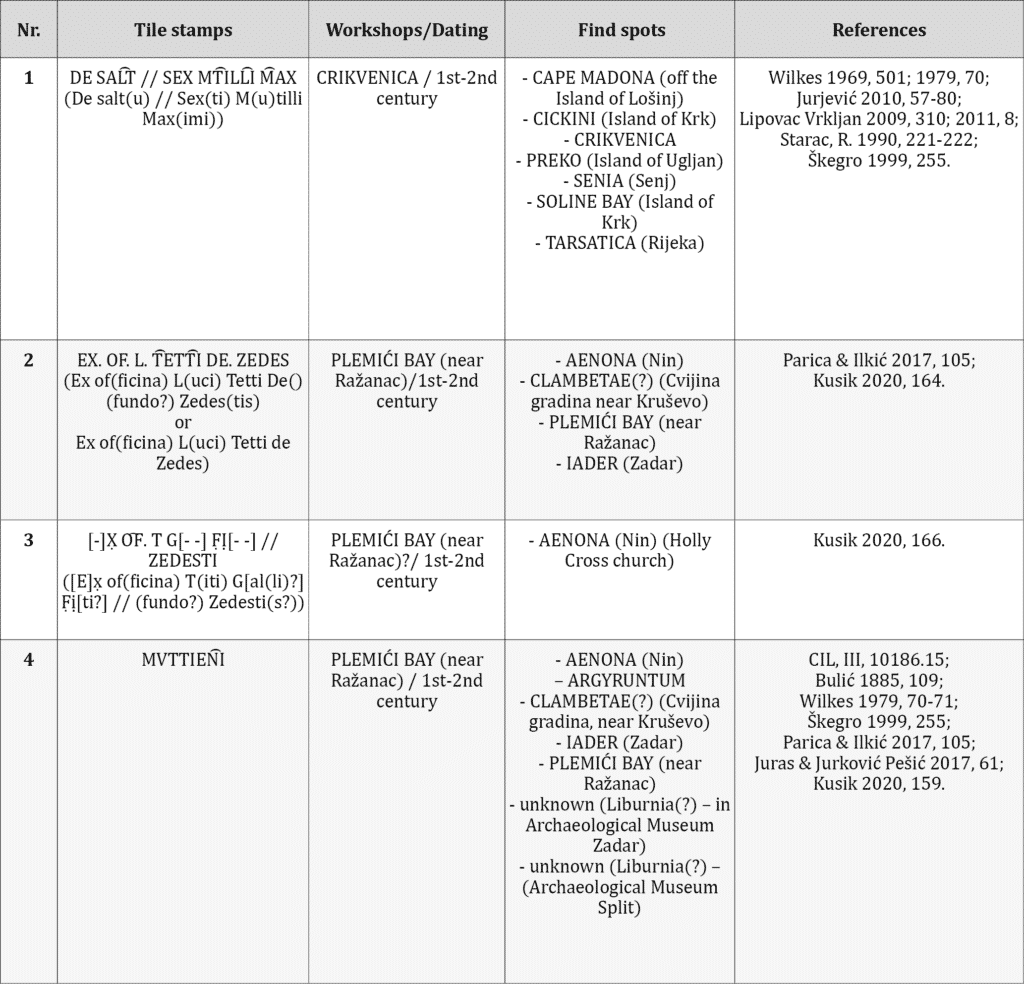
Table 2. Tile stamps associated with presumed local workshops and/or locally distributed.
Stamps are here presented in two groups: I. tiles with consular dates, and II. other civilian stamps – not listed in the first group or in Table 1.
Stamps are listed in the alphabetical order of a nomen gentilicium or of a cognomen if gentilicium is lacking; after that follow the fragmentary stamps that could not have been attributed with certainty to any onomastic element (alphabetically, according to the first preserved letter).
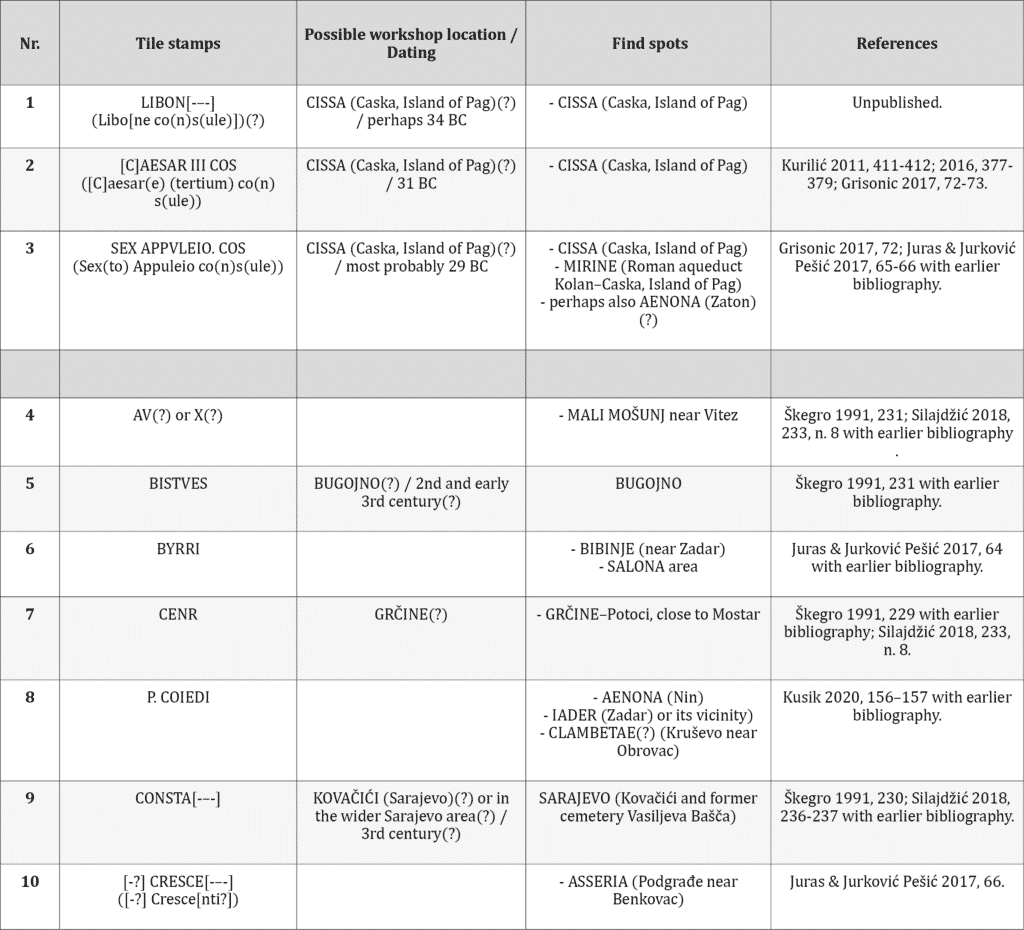
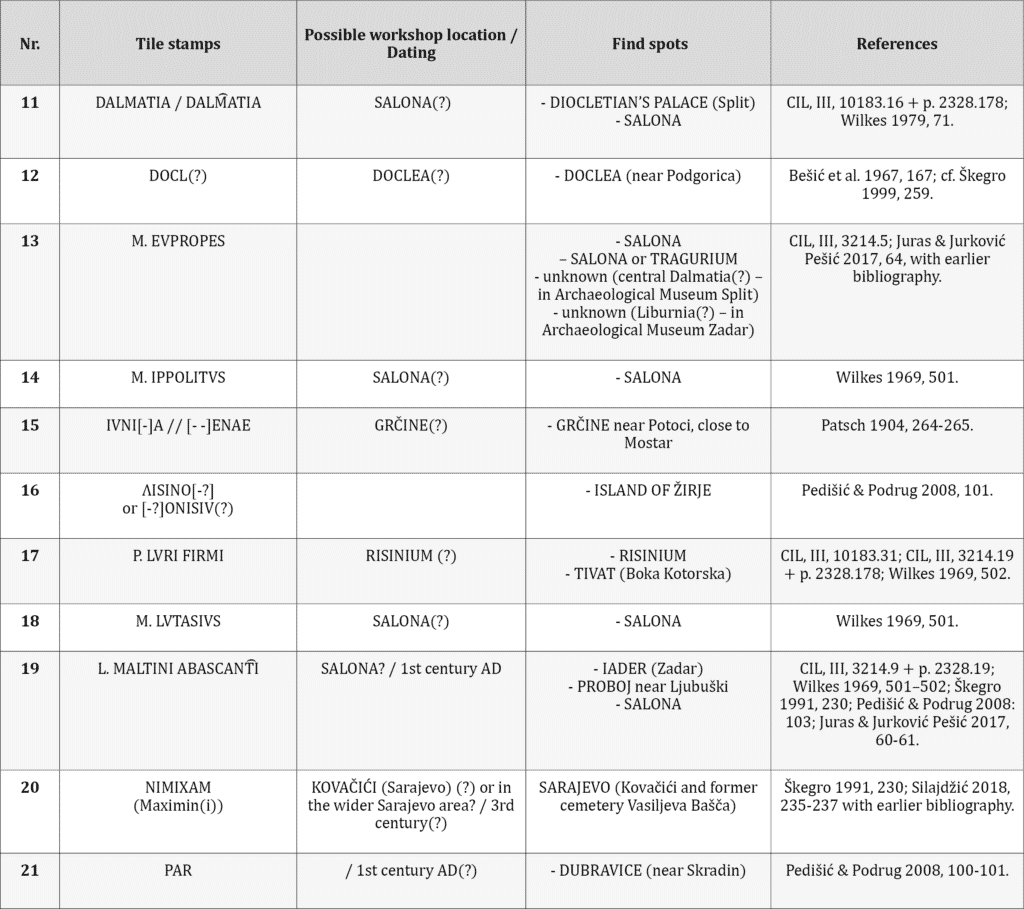
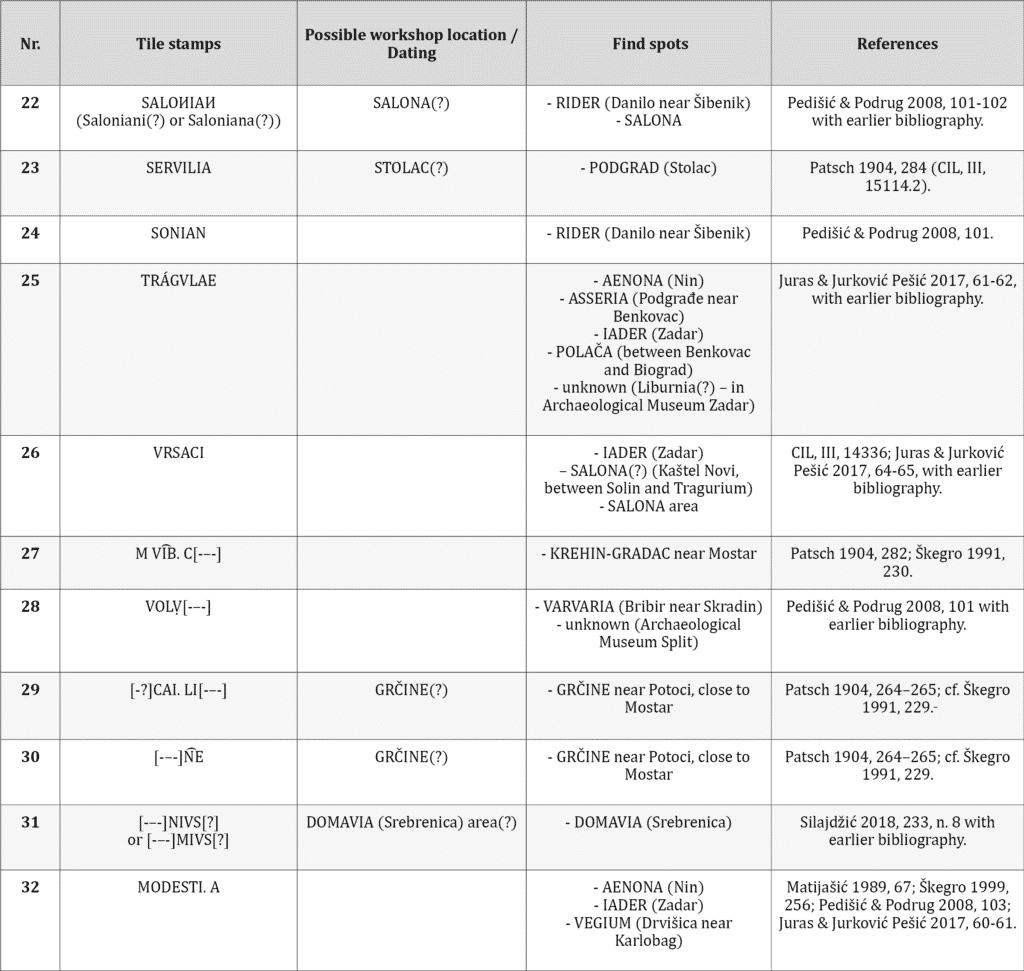
Table 3. Stamps of military units (data compiled after Tončinić 2009, 1447-1456; Tončinić et al. 2011, 361-365; Škegro 1991, 224; cf. also Miletić 2011, 264-271)
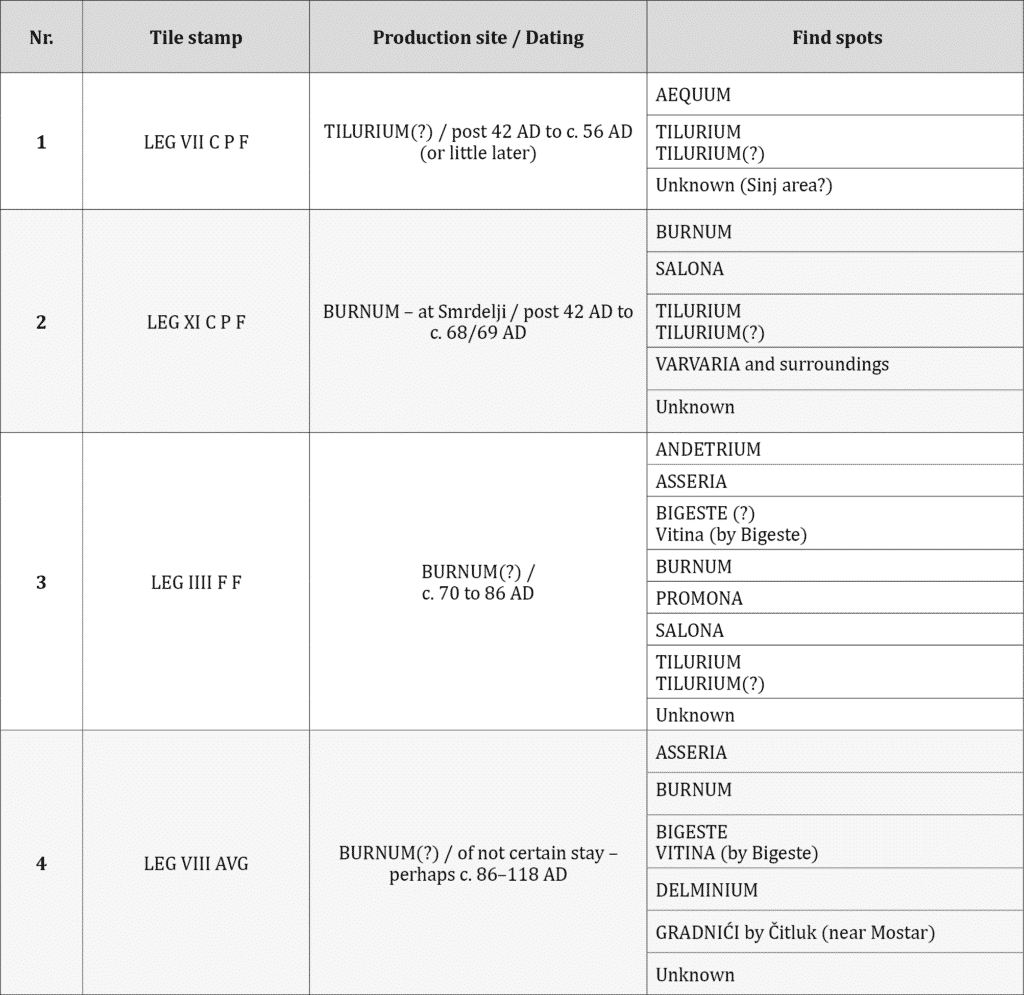
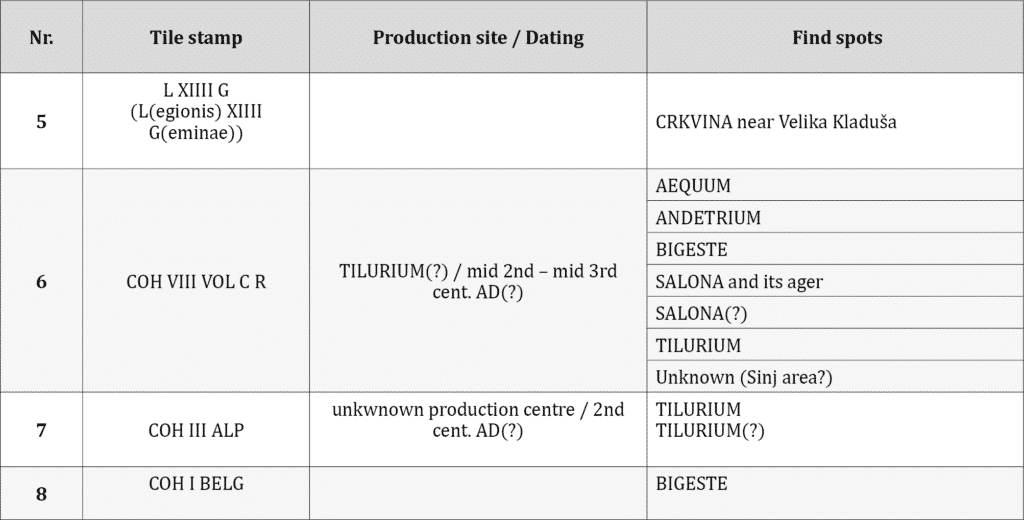
References
- Alföldy, G. (1969): Die Personennamen in der römischen Provinz Dalmatien, Heidelberg.
- Bešić, Z., Garašanin, D., Garašanin, M. and Kovačević, J. (1967): Istorija Crne Gore, knj. I. Od najstarijih vremena do kraja XII vijeka, Titograd.
- Brunšmid, J. (1898): “Arheološke bilješke iz Dalmacije i Panonije II.”, Vjesnik Arheološkog muzeja u Zagrebu, n.s. 3, 150-169.
- Bukowiecki E., Volpe R. and Wulf-Rheidt, U., ed. (2015): Il laterizio nei cantieri imperiali. Roma e il Mediterraneo, Atti del I workshop “Laterizio”, Roma, 27–28 novembre 2014, Archeologia dell’Architettura 20, Firenze.
- Bulić, F. (1885), “Nomi e marche di fabbrica su tegoli, mattoni, vasi ed altri oggetti fittili nel Museo di Spalato”, Bullettino di archeologia e storia dalmata, 8.6, 108-110.
- Bulić, D. and Koncani Uhač, I. (2020): “Observations on the Architecture and Products of the Figlina in Fažana”, in: Machut et al., ed. 2020, 57-77.
- Cambi, N. (1991): “Amfore kasnorepublikanskog doba i njihova produkcija u Dalmaciji”, Posebna izdanja ANUBiH, 95(27), 55-65.
- Carini, A. (2014): “La produzione laterizia nei pagi veleiati occidentali. Conferme e novità”, in: Dall’Aglio et al., ed. 2014, 127-144.
- Cipriano, S. and Mazzocchin, S. (2007): “Produzione e circolazione dei laterizi nel Veneto tra I secolo a.C. e II secolo d.C.: autosufficienza e rapporti con l’area aquileiese”, in: Aquileia dalle origini alla costituzione del ducato longobardo. Territorio, economia, società, 2, Antichità Altoadriatiche 65, Trieste, 633-686.
- Dall’Aglio, P.-L., Franceschelli, C. and Maganzani, L., ed. (2014): Atti del IV Convegno Internazionale di Studi Veleiati, Veleia-Lugagnano Val d’Arda, 20-21 settembre 2013, Bologna.
- Davison, D., Gaffney, V. and Marin, E., ed. (2006): Dalmatia. Research in the Roman Province 1970-2001. Papers in honour of J. J. Wilkes, BAR Int. Series 1576, Oxford.
- Derks, T. (2011): “Town-country dynamics in Roman Gaul. The epigraphy of the ruling elite”, in: Roymans & Derks, ed. 2011, 107-137.
- Faričić, J. and Lenkić, J., ed. (2017): Župa Ljubač – zrcalo povijesnih i geografskih mijena u sjeverozapadnom dijelu Ravnih kotara, Ljubač-Zadar.
- Fiala, F. and Patsch, C. (1895): “Untersuchungen römischer Fundorte in der Hercegovina”, Wissenschaftliche Mitteilungen aus Bosnien und der Herzegowina, 3, 257-283.
- Gaddi, D. and Maggi, P. (2017): “Anfore italiche”, in: Maggi et al., ed. 2017, 263-328.
- Grisonic, M. (2017): “Amphorae from Caska in the Augusto-Tiberian period: imports and local productions?”, in: Lipovac Vrkljan et al., ed. 2017, 68-79.
- Ilkić, M. (2017): “Numizmatički nalazi s područja Ljupča”, in: Faričić & Lenkić, ed. 2017, 98-111.
- Ilkić, M. (2018): “Numismatic finds from the area of the workshop of Sextus Metillius Maximus in Crikvenica”, in: Lipovac Vrkljan & Konestra, ed. 2018, 44-49.
- Janežić, M., Nadbath, B., Mulh, T. and Žižek, I., ed. (2018): New Discoveries Between the Alps and the Black Sea Results from the Roman Sites in the Period Between 2005 and 2015. Proceedings of the 1st International Archaeological Conference, Ptuj, 8th and 9th October 2015, Ljubljana.
- Juras, I. and Jurković Pešić, F. (2016): “Tegule s pečatom iz antičke zbirke Arheološkoga muzeja Zadar / Stamped tegulae from the Roman antiquity collection of the Archaeological museum Zadar”, Diadora, 30, 31-76.
- Jurjević, M. (2010): “Krovne opeke (tegulae) s pečatom iz Preka na otoku Ugljanu”, Diadora, 24, 57-80.
- Konestra, A. and Lipovac Vrkljan, G. (2018): “Pottery workshops in the coastal area of Roman Dalmatia: landscape, spatial organization, ownership”, in: Janežić et al., ed. 2018, 127-141.
- Konestra, A., Lipovac Vrkljan, G. and Šiljeg, B. (2020): “The assortment of ceramic building materials from the pottery workshop of Sextus Me(u)tillius Maximus at Crikvenica (Croatia) / Asortiman građevinske keramike iz keramičarske radionice Sexta Me(u)tillia Maxima u Crikvenici (Hrvatska), Prilozi Instituta za arheologiju u Zagrebu, 37, in press.
- Konestra, A., Lipovac Vrkljan, G. and Welc, F. (forthcoming): “Distribution possibilities and transport infrastructure in northern Dalmatia’s pottery workshops: evidence and interpretations”, in: Lipovac Vrkljan & Konestra, ed. forthcoming.
- Kompare, T. (2015): “Tegole romane in Istria nord-occidentale: prodotto complementare di figline anforarie?”, in: Bukowiecki et al., ed. 2015, 114-119.
- Kurilić, A. (2011): “Kasnoantički stambeni objekt iz Caske (Cissa) na otoku Pagu”, Histria antiqua, 20, 405-413.
- Kurilić, A. (2016): “Roman tile stamped [C]AESAR III COS”, in: Studi in onore di Claudio Zaccaria, Antichità Altoadriatiche 85, Trieste, 377-386.
- Kurilić, A. and Serventi, Z. (2015): “Natpis Gaja Kornelija s Ilovika i Cornelii u Liburniji / Caius Cornelius’s Inscription from Ilovik and Cornelii in Liburnia”, Opuscula archaeologica, 37-38, 219-247.
- Kurilić, A. and Štefanac, B. (2019): “Novi natpis iz Zadra posvećen Faustini Augusti / An Inscription Recently Found in Zadar Dedicated to Faustina Augusta, Asseria, 14, 67-97.
- Kurzmann, R. (2005): “Soldier, Civilian and Military Brick Production”, OJA, 24.4, 405-414.
- Kusik, V. (2020): “Pečati na tegulama iz fundusa Arheološkog muzeja Zadar – Odjel Muzej ninskih starina / Stamps on the tegulae from Museum of Nin Antiquities Department of Archaeological Museum Zadar”, Diadora, 33/34, 151-207.
- Lipovac Vrkljan, G. (2009): “L’officina ceramica di Crikvenica”, in: Pesavento Mattioli & Carre, ed. 2009, 309-314.
- Lipovac Vrkljan, G., Radić Rossi, I. and Šiljeg, B., ed. (2011): Roman ceramic and glass manufactures. Production and trade in the Adriatic region. Proceedings of the 1st international archaeological colloquium, Crikvenica, 23-24 October 2008, Zagreb-Crikvenica.
- Lipovac Vrkljan, G., Radić Rossi, I. and Konestra, A., ed. (2017): AdriAmphorae. Amphorae as a resource for the reconstruction of economic development in the Adriatic region in Antiquity: local production, Proceedings of the workshop, Zagreb, 21st April 2016, Zagreb.
- Lipovac Vrkljan, G. and Konestra, A., ed. (2018): Pottery Production, Landscape and Economy of Roman Dalmatia. Interdisciplinary approaches, Archaeopress Roman Archaeology 47, Oxford.
- Lipovac Vrkljan, G. and Konestra, A. (2018): “Approaching the Roman economy of the province of Dalmatia through pottery production – the Liburnia case study”, in: Lipovac Vrkljan & Konestra, ed. 2018, 14-36.
- Lipovac Vrkljan, G., Konestra, A. and Ugarković, M. (2018): “Eastern Adriatic Hellenistic and Roman pottery and ceramics production sites”, in: Lipovac Vrkljan & Konestra, ed. 2018, 1-6.
- Lipovac Vrkljan, G. and Konestra, A., ed. (forthcoming): Roman ceramic and glass manufactures. Production and trade in the Adriatic region and beyond. Proceedings of the 4th international archaeological colloquium, Crikvenica, 8th-9th November 2017.
- Machut, P., Marion, Y., Ben Amara, A. and Tassaux, F., ed. (2020): Recherches pluridisplinaires récentes sur les amphores nord-adriatiques à l’époque romaine – Recent multidisciplinary research on northern Adriatic amphorae during the Roman period. Actes de la Table ronde internationale (Bordeaux, 11 avril 2016), AdriAtlas 3, Bordeaux, [on line] https://una-editions.fr/adriatlas-3-recherches-pluridisplinaires-recentes-sur-les-amphores-nord-adriatiques-a-lepoque-romaine/ [consulted on 28 april 2021].
- Maggi, P. (2018): “Crikvenica amphorae from Canale Anfora: first evidence of Liburnian wine at Aquileia”, in: Lipovac Vrkljan & Konestra, ed. 2018, 57-61.
- Maggi, P., Maselli Scotti, F., Pesavento Mattioli, S. and Zulini, E., ed. (2017): Materiali per Aquileia. Lo scavo di Canale Anfora (2004-2005), Trieste.
- Marion, Y. and Tassaux, F. (2020): «Les amphores d’Istrie septentrionale et centrale: ateliers et typochronologie», in: Machut et al., ed. 2020, 21-37.
- Matijašić, R. (1989): “Rimske krovne opeke s radioničkim žigovima na području sjeverne Liburnije”, in: Rapanić, ed. 1989, 61-71.
- McWhirr, A., ed (1979): Roman Brick and Tile. Studies in Manufacture, Distribution and Use in the Western Empire, BAR Int. Series 68, Oxford.
- Miletić, Ž. (2011): “Production of tegulae in Burnum in the context of building activities”, in: Lipovac Vrkljan et al., ed. 2011, 263-277.
- Miletić Čakširan, I. (2019): Tipološko kronološka klasifikacija rimske keramike iz Siscije, Doctoral thesis, University of Zagreb.
- Münzer, F. (1921): “Scribonius Libo (nr. 20)”, Realencyclopädie der classischen Altertumswissenschaft, II/A1, 881-885.
- Nonnis, D. (1999): “Attività imprenditoriali e classi dirigenti nell’età repubblicana. Tre città campione”, CCG, 10, 71-109.
- OPEL: Onomasticon Provinciarum Europae Latinarum, vol. I-IV, Budapest-Wien, 1994-2002.
- Oštarić, I. and Kurilić, A. (2013): Arheološka karta otoka Paga, Novalja.
- Ožanić Roguljić, I. (2012): “Pottery from the workshop of Sextus Metilius Maximus (Crikvenica-Igralište/Ad Turres, Northern Dalmatia)”, RCRF Acta, 42, 125-132.
- Parica, M. and Ilkić, M. (2017): “Podmorski arheološki nalazi u okolici Ljupča”, in: Faričić & Lenkić, ed. 2017, 98-112.
- Patsch, C. (1904): “Archäologisch-epigraphische Untersuchungen zur Geschichte der römischen Provinz Dalmatien. VI”, Wissenschaftliche Mitteilungen aus Bosnien und der Herzegowina, 9, 171-301.
- Patsch, C. (1914): “Zbirke rimskih i grčkih starina u bos.-herc. zemaljskom muzeju”, Glasnik Zemaljskog muzeja u Bosni i Hercegovini, 26, 141-220.
- Pedišić, I. and Podrug, E. (2008): “Antički opekarski pečati iz fundusa Muzeja Grada Šibenika / Roman Brick Workshop Stamps from the Collection of the Šibenik City Museum”, Opuscula archaeologica, 31, 81-141.
- Pesavento Mattioli, S. and Carre, M.-B., ed. (2009): Olio e pesce in epoca romana. Produzione e commercio nelle regioni dell’alto Adriatico, Atti del Convegno, Padova, 16 febbraio 2007, Antenor Quaderni 15, Roma.
- Pietruszka, W. and Wypijewski, I. (2016): “Sextus Mutillius Maximus: In Search of the Owner of a Liburnian saltus”, ZPE, 198, 283-286.
- Potter, D. S. and Damon, C. (1999): “The ‘Senatus Consultum de Cn. Pisone Patre’”, AJPh, 120.1, 13-42.
- Rapanić, Ž., ed. (1989): Arheološka istraživanja na otocima Krku, Rabu i Pagu i u Hrvatskom primorju, Izdanja Hrvatskog arheološkog društva 13, Zagreb.
- Roymans, N. and Derks, T., ed. (2011): Villa landscapes in the Roman North. Economy, culture and lifestyles, Amsterdam archaeological studies 17, Amsterdam.
- Silajdžić, T. (2018): “Tipologija rimskih ciglana s područja Bosne i Hercegovine – prilog poznavanju rimske građevinske djelatnosti u unutrašnjosti provincije Dalmacije”, Acta Illyrica, 2.2, 231-265.
- Starac, A. (1999): Rimsko vladanje u Histriji i Liburniji: društveno i pravno uređenje prema literarnoj, natpisnoj i arheološkoj građi. I: Histrija, Pula.
- Starac, R. (1991): “Antička keramika s lokaliteta ‘Igralište’ u Crikvenici”, Vinodolski zbornik, 6, 221-234.
- Škegro, A. (1991): “Rimska žigosana opeka na području Bosne i Hercegovine”, in: Zbornik radova posvećenih akademiku Alojzu Bencu, Posebna izdanja Knjiga 95, Sarajevo, 221-237.
- Škegro, A. (1999): Gospodarstvo rimske provincije Dalmacije, Zagreb.
- Škegro, A. (2006): “The Economy of Roman Dalmatia”, in: Davidson et al., ed. 2006, 149-173.
- Tončinić, D. (2009): “Ziegelstempel römischer Militäreinheiten in der Provinz Dalmatien”, in: LIMES XX. Estudios sobre la frontera romana / Roman Frontier Studies, III, Madrid, 1447-1459.
- Tončinić, D. (2011): Spomenici VII. legije na području rimske provincije Dalmacije / Monuments of Legio VII in the Roman Province of Dalmatia, Split.
- Tončinić, D., ed. (2011): Radovi kolokvija Rimska vojska u procesu romaniziranja provincije Dalmacije, Sinj, 13. listopada 2006, Izdanja Hrvatskog arheološkog društva 27, Zagreb-Sinj.
- Tončinić, D., Tabak, A. and Librenjak, A. (2011): “Rimski vojni pečati u Cetinskoj krajini”, in: Tončinić, ed. 2011, 361-379.
- Welc, F., Konestra, A., Dugonjić, A., Androić Gračanin, P., Rabiega, K. and Nowacki, B., (2019): “Multidisciplinary insight into late Roman rural settlement on the northeastern Adriatic coast of Croatia: Island of Rab case study”, Polish Archaeology in the Mediterranean, 28.2, 481-508.
- Wilkes, J. J. (1969): Dalmatia, London.
- Wilkes, J. J. (1979): “Importation and manufacture of stamped bricks and tiles in the Roman province of Dalmatia”, in: McWhirr, ed. 1979, 65-72.
Notes
- See Lipovac Vrkljan et al. 2018 for a bibliographic overview.
- RED – Roman Economy in Dalmatia: production, distribution and demand in the light of pottery workshops project led by G. Lipovac Vrkljan and funded by the Croatian Science Foundation, IP-11-2013-3973.
- Lipovac Vrkljan & Konestra 2018, 16.
- Silajdžić 2018, 234-235 (types II/b and II/c), 237 (type II/a).
- Škegro 1991, 231; cf. Silajdžić 2018, 233, n. 8; both with earlier bibliography.
- Škegro 1999, 259, n. 68. However, this stamp is rather controversial because there are no scholarly reliable information relating to its find and appearance; the only original publication of its find (Bešić et al. 1967, 167) is quite sceptical of it: “… insufficiently verified information about the existence of a tiles workshop with a stamp Docl – probably relating to the city of Doclea – the square bricks of which were allegedly found in Spuž” (translated and emphasised by A. Kurilić).
- Cf. workshop in Krčevine (site Dobrljevo) near Šipovo (Silajdžić 2018, 241-242). For a list of (presumed) municipal officinae see Škegro 2006, 161.
- Wilkes 1969, 501-502.
- Liburnia has been chosen for a case-study because it is the best researched region of the province and can thus procure enough relevant data.
- The possibility of other models of production remains open, as so far no data or indications point to them.
- EX OF L. TETTI DE. ZEDES (fig. 3) and MVTTIENI from the Plemići Bay, and [-]X̣ O͡F. T G[- -] F̣Ị[- -] // ZEDESTI (= [E]x̣ of(ficina) T(iti) G[al(li)?] F̣ị[ti?] // Zedesti(s?)) from Nin.
- These are the first attestations of the name in the Roman world. Presently it is difficult to detect whether it was a place name or a personal name, and whether it was used here in adjectival form (Zedesti or perhaps Zedestis = Zedes’, belonging to Zedes) or in the Ablative case (Zedesti = from Zedes’ [sc. property or land or similar]). We would like to express our warmest gratitude to Dr. Zvonko Liović (University of Zadar, Department of Classical Philology) for all his assistance relating to this name.
- On the other hand, perhaps the owner of the estate was Muttienus (registered on the stamp MVTTIENI) (cf. Lipovac Vrkljan & Konestra 2018, 24), and Zedes would be solely – as previously stated – the toponym of the production site.
- See bibliography in Table 2, n. 32, and Cipriano & Mazzochin 2007, 638-639, 644, 670.
- Lipovac Vrkljan & Konestra 2018, 23; Kurilić 2016, 382f.; Konestra et al. 2020.
- Gaddi & Maggi 2017, 278, fig. 27, 28; Maggi 2018.
- Some “stamps” have been excluded from lists because they were either not stamps but graffiti (such as SAT [CIL, III, 13340.12] and IVL COD [Fiala & Patsch 1895, 280]; for both being identified as stamps see e.g. Škegro 1991, 230; Silajdžić 2018, 233, n. 8) or were stamps on ceramic vessels, such as ΓΛΙ//ΚΩΝ, a stamp on a big ceramic vessel (possibly a dolium?) (Patsch 1914, 186; erroneously included among brick stamps in, e.g., Škegro 1991, 230). We have also excluded a stamp initially read as [-–-]ZVRI (a fragment from Tivat; CIL, III, 3214.19; cf. Škegro 1999, 256), because the reading was later amended and connected with the already known stamp P. LVRI FIRMI (CIL, III, p. 2328.178 ad CIL, III, 3214.19), which we follow in our Table 2 (n. 17).
- See, e.g., Škegro 2006, 160-16; Pedišić & Podrug 2008, 100; Juras & Jurković Pešić 2016, 57.
- For legionary and auxiliary units in Dalmatia see, e.g., Wilkes 1969, 92-120, 135-144.
- Lipovac Vrkljan & Konestra 2018, 14 (with references to earlier bibliography).
- Škegro 2006, 160-161; Tončinić 2009, 1454; Miletić 2011, 264.
- See Tončinić 2011, 9 for the former opinion and Miletić 2011, 364 for the latter; cf. also Wilkes 1969, 92-98.
- Cf. Miletić 2011, 264; Tončinić 2009, 1454.
- Cf. Tončinić 2009, 1456; see also in Table 3.
- Cf. Tončinić 2009, 1456; Tončinić et al. 2011, 363–364.
- For Roman remains in Caska see Oštarić & Kurilić 2013, 216, 230-239; Grisonic 2017, 68-71.
- Kurilić 2016, 379-381.
- Amphorae stamps from Caska are so far the only known stamps on amphorae of supposed eastern Adriatic production applied to a non-Lamboglia 2 type (for the latter see Cambi 1991).
- Kurilić 2016, 382. A stamp that most probably belongs to the same Sex. Appuleius was recently found in Pannonia, on a tile fragment excavated in Roman Siscia (cf. Miletić Čakširan 2019, 255, 257).
- Grisonic 2017, 74-75.
- Protective test excavations lead by Dr Anamarija Kurilić were conducted from 15th to 25th of April 2019 on the cadastral parcel n. 1943/15 (cadastral municipality of Novalja) prior to planned building activities, because the parcel is situated within the archaeologically protected area. Roman architectural remains were unearthed in the southernmost part of the parcel, and this fragment was found within the rubble next to a Roman wall. Results of excavations have not yet been published.
- Münzer 1921.
- Cf. Carini 2014, 127 (with valuable references to earlier relevant bibliography).
- Cf. Kurilić 2016, 381-382.
- For the Calpurnii Pisones in Caska see Wilkes 1969, 199-200, 331 (for the Calpurnii in Liburnia and Dalmatiasee pp. 210-211, 213, 305-306, 331); cf. Kurilić 2016, 383; Grisonic 2017, 70. Calpurnii had their estates in the neighbouring Histria (Tenth Italian region), where a number of imperial and other senatorial estates are known (cf. Starac 1999, 53-54, 58-59, 72-73, 77-79, 85-87), unlike much larger Dalmatia where these are still virtually unknown (cf. Wilkes 1969, where there are no mentions of either, except for those owned by Calpurnii and perhaps for another one owned by Caecinae; see pp. 331-332, 392).
- SCPP, 83-89: “uti(que) bona Cn. Pisonis patris publicarentur excepto saltu, qui esset in Hillyrico; eum saltum placere Ti. Caesari Augusto principi nostro, cuius a patre divo Aug(usto) Cn. Pisoni patri donatus erat, reddi, (…)” (“that the property of the elder Cn. Piso be confiscated, with the exception of the lands which were in Illyricum; THAT it was ((the Senate’s)) pleasure THAT these lands be returned to Ti. Caesar Augustus our princeps, by whose father the deified Augustus they had been presented to the elder Cn. Piso (…)”) (Latin text and English translation by Potter & Damon 1999, 26–27; emphasised by authors).
- Calpurnia L. Pisonis aug. f. Cn. Pisonis neptis: AE 1964, 270; AE 1949, 199a-b. Cf. Grisonic 2017, 70 (with earlier literature).
- This issue is too complex to be analysed here in greater depth and shall be dealt with elsewhere by A. Kurilić.
- Pietruszka & Wypijewski 2016; see also Konestra et al. 2020.
- Pietruszka & Wypijewski 2016, 283–285.
- Kurilić & Serventi 2015, 224ff.
- Cf. Kurilić & Štefanac 2019, 82ff.
- Up to now his cognomen has been tentatively interpreted as DESEDES (cf. e.g. Kusik 2020, 164), but a punctuation mark after DE and another stamp with ZEDES in it (table 1, n. 3) speak in favour of separating DE from ZEDES; thus, his cognomen, abbreviated to DE, might have been Demetrius or Dexter – just to mention some of the more common names starting with De- which are present in Dalmatia (Alföldy 1969, 186-187) – or some other (see list of names starting with De- from Western provinces in OPEL, II, 94-99).
- From all of the gentilicia starting in Gal- in OPEL (II, 159-160) and Alföldy (1969, 87) Gallius has been chosen because of its high frequency and its presence in Dalmatia. Cognomina starting in Fit- are much rarer and OPEL (II, 143) lists only three names, none of which are present in Dalmatia: Fiteles, Fittio and Fitus. Fitus seemed to fit best to the text layout of the stamp.
- Search of the EDR (Epigraphic Database Rome, accessed 30/8/2020) turned up 24 inscriptions from Italy mentioning Muttieni (12 of which are from Regio II); one of these is from Pola in Histria (CIL, V, 8139) where one member of that gens was a duumvir. Cf. Kusik 2020, 159.
- ILIug 2899. Search of the EDH (Epigraphic Database Heidelberg, accessed 30/8/2020) confirms the data from OPEL (III, 92) and Alföldy (1969, 101). Cf. Kusik 2020, 159.
- Cf. e.g. Pedišić & Podrug 2008, 100; Juras & Jurković Pešić 2016, 57; Silajdžić 2018, 233, n. 6.
- Cf. Lipovac Vrkljan & Konestra 2018, 14, 25.
- Lipovac Vrkljan & Konestra 2018, 24f.; Ilkić 2018; cf. Škegro 1991, 222; Pietruszka & Wypijewski 2016, n. 29 at p. 285; Konestra et al. 2020.
- Ilkić 2017, 106.
- Škegro 1991, 222–223.
- Wilkes 1969, 502.
- Silajdžić 2018, 238-239 (Ljusina), 243 (Mogorjelo).
- Cf. Derks 2011, 107-108 for Western provinces.
- Kompare 2015, 114; Marion & Tassaux 2020.
- Konestra & Lipovac Vrkljan 2018, 134-136; Lipovac Vrkljan & Konestra 2018, 25-28; Silajdžić 2018, 233; Pedišić & Podrug 2008, 104-105.
- Konestra et al. forthcoming; cf. Pedišić & Podrug 2008, 104.
- Cf. Wilkes 1969: 501. Although we lack firm evidence of foreign, presumably Italic origin for the majority of persons involved in local Dalmatian production, there are no such doubts about the senatorial Calpurnii Pisones from Caska. Italic origin of estate owners and/or officinatores is very plausible during the early stages of the Roman rule because the villae rusticae were complete novelty in the province, introduced by the Romans, which had changed as the Romanisation process progressed, so more and more local owners and/or officinatores may be expected in successive centuries.
- Konestra & Lipovac Vrkljan 2018, 137.
- Kurzmann 2005, 410, 413; Miletić 2011, 266, 273-274.
- Ožanić Roguljić 2012; Kurilić 2016; Grisonic 2017; Lipovac Vrkljan & Konestra 2018; Silajdžić 2018; Konestra et al. 2020.
- See bibliography in Tables 1-3.
- Lipovac Vrkljan & Konestra 2018, 28-30; Kompare 2015; Bulić & Koncani Uhač 2020, 74. For Regio X cf. Nonnis 1999, 85-86.


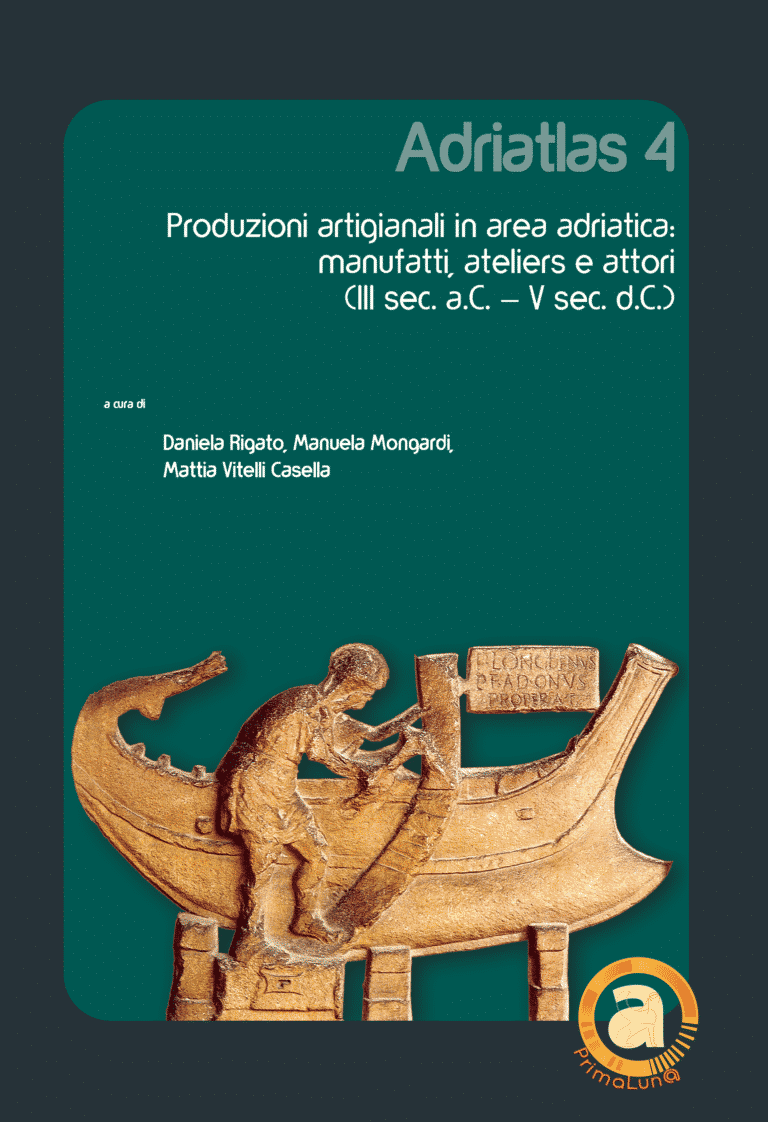





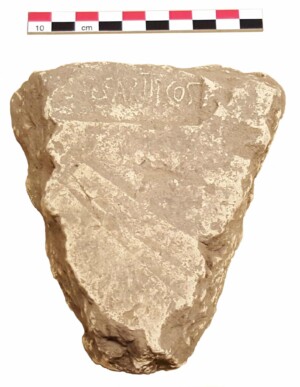
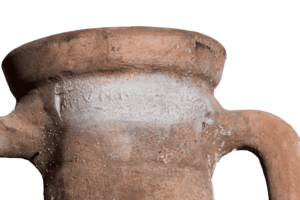
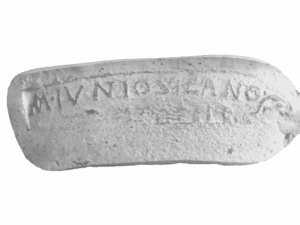
![<figcaption style="line-height: 1em;"><i class="fas fa-tint"></i><span style="font-size: 11px;"> <b>Fig. 7. </b> Stamp LIBON[-–-] from Caska (Cissa) (photo by A. Kurilić).</span></figcaption> Fig. 7. Stamp LIBON[-–-] from Caska (Cissa) (photo by A. Kurilić).](https://una-editions.fr/wp-content/uploads/cache/2021/06/Konestra-Kurilic-Lipovac_7/3488857245.png)
